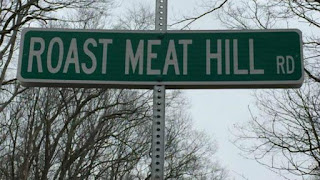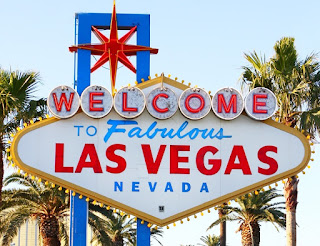Where do our streets get their names? With over 8 million miles of roads in the U.S., so many that even our government can't estimate how many streets, roads, lanes, and courts exist, highlighting the most memorable ones can be an entraining endeavor, but also gives us a glimpse of our history. As America was originally founded and developed, streets were often named after towns in England or Europe where settlers came from, or after prominent family names of those who were important in the new communities.
These days, you’d expect street naming to be a far more democratic process. But in fact, when new subdivisions and communities need street names, the real estate and building developers usually get the privilege of proposing names. The good news it that there is a process to get that named approved, as many of them try to name the streets after themselves, their wives, or children.
 Each city or municipality may have a slightly different process, but usually the developer submits the name request to the city for review. This the building, engineering, and public works departments a chance to comment. Next, the police and fire departments have a chance to weigh in on the name, which is vital because they have to make sure the name isn’t confusing or hard to locate in case they’re trying to reach it during an emergency. Finally, the post office gets a final rule before it goes to a vote.
Each city or municipality may have a slightly different process, but usually the developer submits the name request to the city for review. This the building, engineering, and public works departments a chance to comment. Next, the police and fire departments have a chance to weigh in on the name, which is vital because they have to make sure the name isn’t confusing or hard to locate in case they’re trying to reach it during an emergency. Finally, the post office gets a final rule before it goes to a vote.
What’s the most popular street name in the U.S.? That designation goes to Park, with 9,640 street signs across the country donning that name.
After that, the most popular street names in America are inspired by trees and numbers; for instance, Second Street, Fifth Avenue, etc. And while you’d think there would be just as many First Streets, those are actually not as common because they are often renamed “Main Street.” Oak, Pine, Cedar, Maple, and Elm Streets are present in almost every city.

Local landmarks (Ocean Side Drive, Old Mill Lane, Lake Shore Drive) and the name of Presidents who were born in the area are common.
In Washington, D.C., there are streets named after all 50 states.
After the assassinations of President John F. Kennedy Jr. and civil rights leader Martin Luther King, Jr., many cities in the country changed major thoroughfares to their names to honor them.
There are plenty of streets named after Hollywood celbirities adorning the streets in and around Los Angeles: Bob Hope Drive, (Rudolph) Valentino Place, (Charlie) Chaplin Avenue, Will Rogers Street, (Fred) Astaire Avenue, Judy) Garland Drive, and more than one street named after Elvis Presley.
Here are some other interesting, funny, and questionable street names across the country:
Durt Road
Casco, ME
Crummy Road
Clark Fork, ID
Divorce Court
Heather Highlands, Pennsylvania
Psycho Path
Traverse City, Michigan
No Name Street
Turnersville, New Jersey
Wong Way
Riverside, California, named after George Wong
BMW Drive,
Griswold, Ct.
Skunk Misery Road
Lowell, Mass.
Connecticut has some strange street names that maybe channeled their Puritanical fears, including Hell Hollow Road, Satans Kingdom Road, Beelzebub Road and Devils Garden Road.
 Quite A Road
Quite A Road
Lovell, Maine
Where o Where Drive
Nantucket, Mass.
Pickle Dog Lane
Deer Lodge, Montana
No Name Uno
Gilroy, Calif.
Oh My God Road
Central City, Colo.
Jackass Hill Road
Littleton, Colo.
 Upsan Downs Road
Upsan Downs Road
Wilmington, Del.
Triple XXX Road
Choctaw, Okla.
Why Worry Lane
Phoenix, Ariz.
Witts End Road
Andover, N.J.
Thata Way and Whicha Way
Hemet, Calif.
Zzyzx Road
San Bernadino County, Calif.
 I Dream of Jeannie Way
I Dream of Jeannie Way
Cocoa Beach, Fla.
Jot-em-Down Road
Cumming, Ga.
Bimbo Drive
Fayetteville, N.C.
Ice Cream Street
Shreveport, La.
Milky Way
Cupertino, Calif.
Electric Ave.
Westerville, Ohio
 And trust me when I tell you, this is a just a small sample, with many more explicit and Rated R street names censored from the list!
And trust me when I tell you, this is a just a small sample, with many more explicit and Rated R street names censored from the list!
Here are the most popular street names in California:
Park, 367
Oak, 344
Pine, 318
Sunset, 306
Cedar, 303
Willow, 289
1st / First, 271
Cypress, 269
2nd / Second, 266
Redwood, 258
In Sacramento, many streets were named after famous inventors from American history:
Whitney Ave. namely Eli Whitney, inventor of the cotton gin.
Marconi Ave., named after Guglielmo Marconi, who helped invent the radio.
Eastern Ave. named after James Eastern, who invented the compass.
Hurley Way after Jonathon Hurley, who invented the hockey puck.
Northrop Ave. after Jack Northrop, co-founder of Northrop-Grumman aviation.
Fair Oaks Blvd., named after Higgins Fairoaks, who introduced the concept of planting trees close to roadways.
Cottage Lane after Cyrus Cottage, who invented the picture frame.
So if residents don’t care for the name of their street, is it possible to change it? It is possible through a long process of submitting a name change request, but getting it approved is extremely rare. There are just too many logistical problems when a street name is changed, with consideration for businesses, property owners, landlords and renters who would have to change advertising, stationary, business cards, and all of their bills and accounts. Most importantly, it would require a renewal of every mapping software and GPS system in the world. So if you don’t like your street name, you’re probably better off moving!
These days, you’d expect street naming to be a far more democratic process. But in fact, when new subdivisions and communities need street names, the real estate and building developers usually get the privilege of proposing names. The good news it that there is a process to get that named approved, as many of them try to name the streets after themselves, their wives, or children.
 Each city or municipality may have a slightly different process, but usually the developer submits the name request to the city for review. This the building, engineering, and public works departments a chance to comment. Next, the police and fire departments have a chance to weigh in on the name, which is vital because they have to make sure the name isn’t confusing or hard to locate in case they’re trying to reach it during an emergency. Finally, the post office gets a final rule before it goes to a vote.
Each city or municipality may have a slightly different process, but usually the developer submits the name request to the city for review. This the building, engineering, and public works departments a chance to comment. Next, the police and fire departments have a chance to weigh in on the name, which is vital because they have to make sure the name isn’t confusing or hard to locate in case they’re trying to reach it during an emergency. Finally, the post office gets a final rule before it goes to a vote.What’s the most popular street name in the U.S.? That designation goes to Park, with 9,640 street signs across the country donning that name.
After that, the most popular street names in America are inspired by trees and numbers; for instance, Second Street, Fifth Avenue, etc. And while you’d think there would be just as many First Streets, those are actually not as common because they are often renamed “Main Street.” Oak, Pine, Cedar, Maple, and Elm Streets are present in almost every city.

Local landmarks (Ocean Side Drive, Old Mill Lane, Lake Shore Drive) and the name of Presidents who were born in the area are common.
In Washington, D.C., there are streets named after all 50 states.
After the assassinations of President John F. Kennedy Jr. and civil rights leader Martin Luther King, Jr., many cities in the country changed major thoroughfares to their names to honor them.
There are plenty of streets named after Hollywood celbirities adorning the streets in and around Los Angeles: Bob Hope Drive, (Rudolph) Valentino Place, (Charlie) Chaplin Avenue, Will Rogers Street, (Fred) Astaire Avenue, Judy) Garland Drive, and more than one street named after Elvis Presley.
Here are some other interesting, funny, and questionable street names across the country:
Durt Road
Casco, ME
Crummy Road
Clark Fork, ID
Divorce Court
Heather Highlands, Pennsylvania
Psycho Path
Traverse City, Michigan
No Name Street
Turnersville, New Jersey
Wong Way
Riverside, California, named after George Wong
BMW Drive,
Griswold, Ct.
Skunk Misery Road
Lowell, Mass.
Connecticut has some strange street names that maybe channeled their Puritanical fears, including Hell Hollow Road, Satans Kingdom Road, Beelzebub Road and Devils Garden Road.
 Quite A Road
Quite A RoadLovell, Maine
Where o Where Drive
Nantucket, Mass.
Pickle Dog Lane
Deer Lodge, Montana
No Name Uno
Gilroy, Calif.
Oh My God Road
Central City, Colo.
Jackass Hill Road
Littleton, Colo.
 Upsan Downs Road
Upsan Downs RoadWilmington, Del.
Triple XXX Road
Choctaw, Okla.
Why Worry Lane
Phoenix, Ariz.
Witts End Road
Andover, N.J.
Thata Way and Whicha Way
Hemet, Calif.
Zzyzx Road
San Bernadino County, Calif.
 I Dream of Jeannie Way
I Dream of Jeannie WayCocoa Beach, Fla.
Jot-em-Down Road
Cumming, Ga.
Bimbo Drive
Fayetteville, N.C.
Ice Cream Street
Shreveport, La.
Milky Way
Cupertino, Calif.
Electric Ave.
Westerville, Ohio
 And trust me when I tell you, this is a just a small sample, with many more explicit and Rated R street names censored from the list!
And trust me when I tell you, this is a just a small sample, with many more explicit and Rated R street names censored from the list!Here are the most popular street names in California:
Park, 367
Oak, 344
Pine, 318
Sunset, 306
Cedar, 303
Willow, 289
1st / First, 271
Cypress, 269
2nd / Second, 266
Redwood, 258
In Sacramento, many streets were named after famous inventors from American history:
Whitney Ave. namely Eli Whitney, inventor of the cotton gin.
Marconi Ave., named after Guglielmo Marconi, who helped invent the radio.
Eastern Ave. named after James Eastern, who invented the compass.
Hurley Way after Jonathon Hurley, who invented the hockey puck.
Northrop Ave. after Jack Northrop, co-founder of Northrop-Grumman aviation.
Fair Oaks Blvd., named after Higgins Fairoaks, who introduced the concept of planting trees close to roadways.
Cottage Lane after Cyrus Cottage, who invented the picture frame.
So if residents don’t care for the name of their street, is it possible to change it? It is possible through a long process of submitting a name change request, but getting it approved is extremely rare. There are just too many logistical problems when a street name is changed, with consideration for businesses, property owners, landlords and renters who would have to change advertising, stationary, business cards, and all of their bills and accounts. Most importantly, it would require a renewal of every mapping software and GPS system in the world. So if you don’t like your street name, you’re probably better off moving!







































